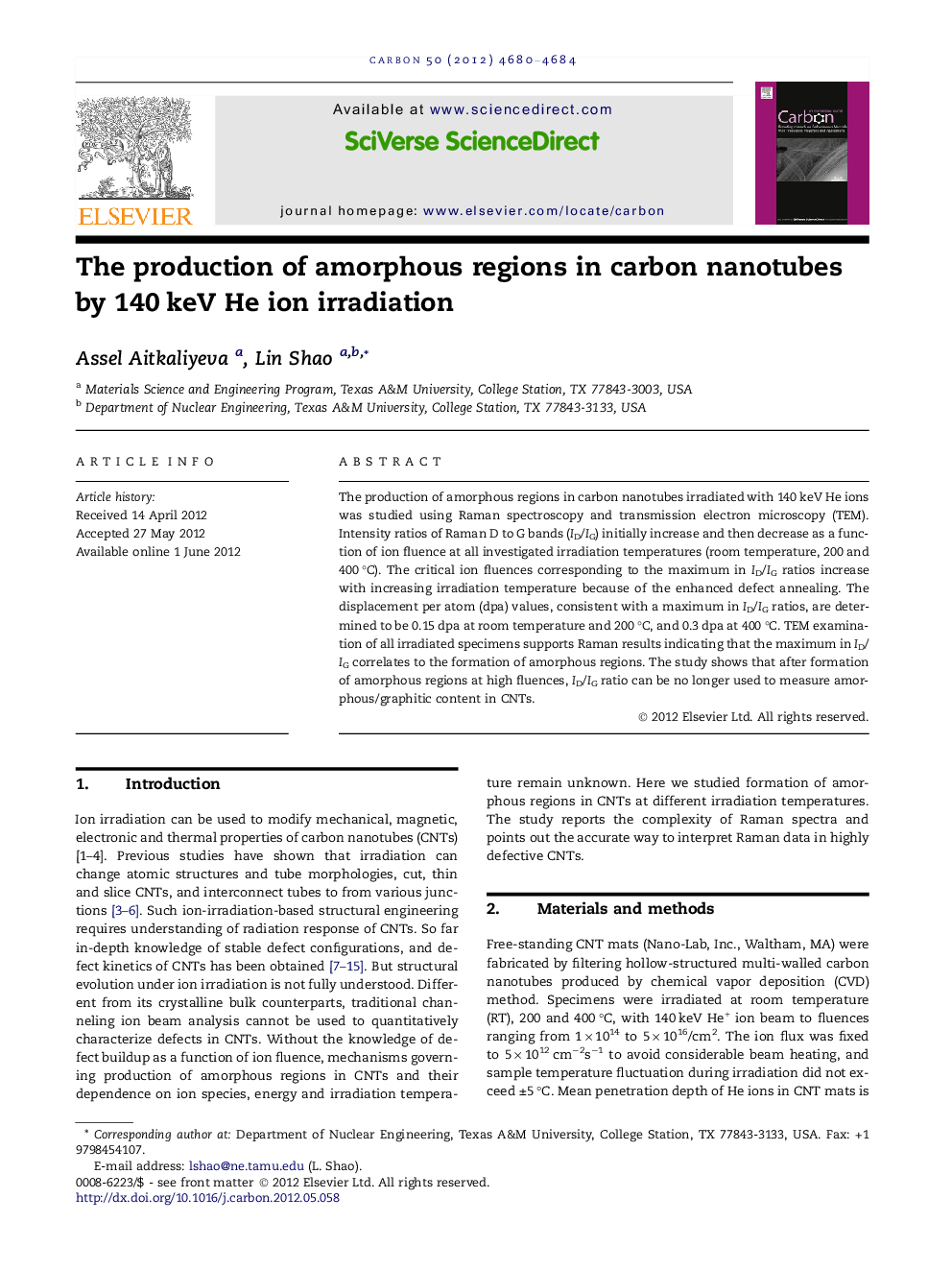| Article ID | Journal | Published Year | Pages | File Type |
|---|---|---|---|---|
| 1414837 | Carbon | 2012 | 5 Pages |
The production of amorphous regions in carbon nanotubes irradiated with 140 keV He ions was studied using Raman spectroscopy and transmission electron microscopy (TEM). Intensity ratios of Raman D to G bands (ID/IG) initially increase and then decrease as a function of ion fluence at all investigated irradiation temperatures (room temperature, 200 and 400 °C). The critical ion fluences corresponding to the maximum in ID/IG ratios increase with increasing irradiation temperature because of the enhanced defect annealing. The displacement per atom (dpa) values, consistent with a maximum in ID/IG ratios, are determined to be 0.15 dpa at room temperature and 200 °C, and 0.3 dpa at 400 °C. TEM examination of all irradiated specimens supports Raman results indicating that the maximum in ID/IG correlates to the formation of amorphous regions. The study shows that after formation of amorphous regions at high fluences, ID/IG ratio can be no longer used to measure amorphous/graphitic content in CNTs.
